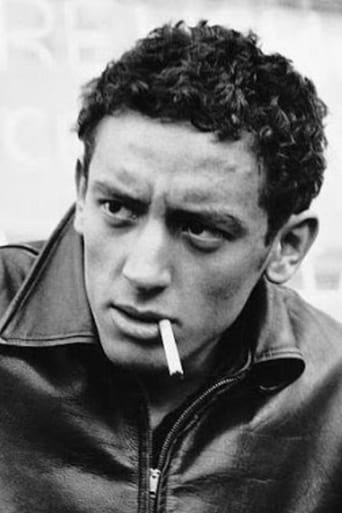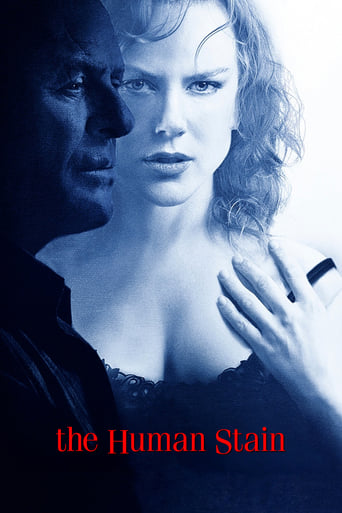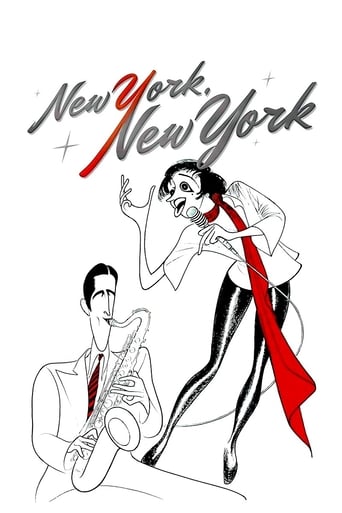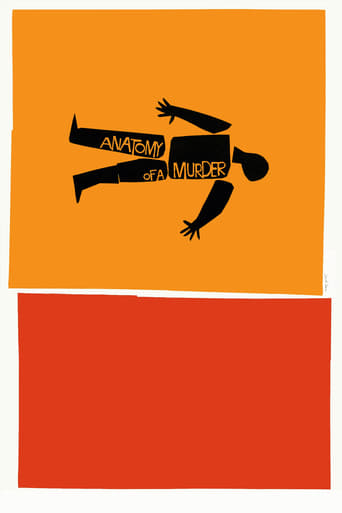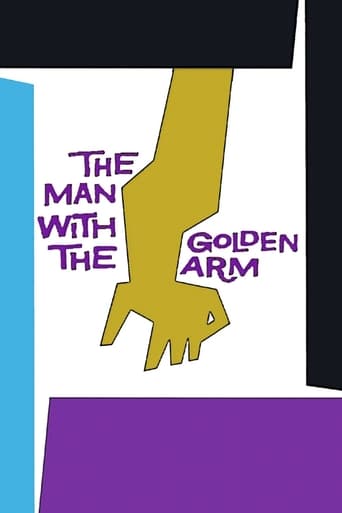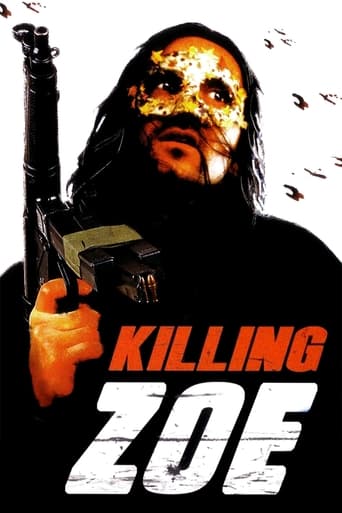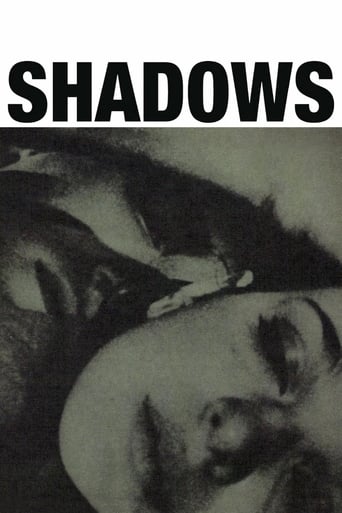
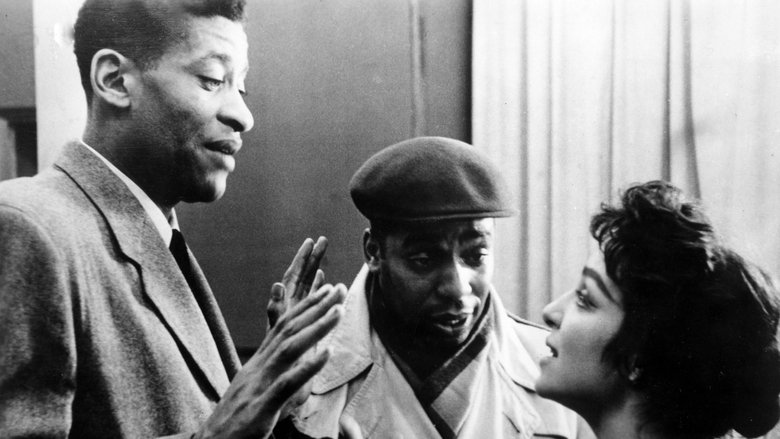
Shadows (1961)
The relationship between Lelia, a light-skinned black woman, and Tony, a white man is put in jeopardy when Tony meets Lelia’s darker-skinned jazz singer brother, Hugh, and discovers that her racial heritage is not what he thought it was.
Watch Trailer
Cast
Similar titles

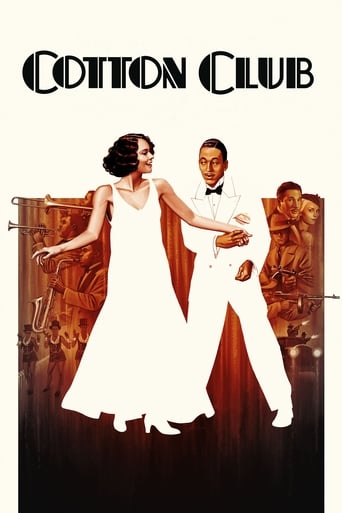
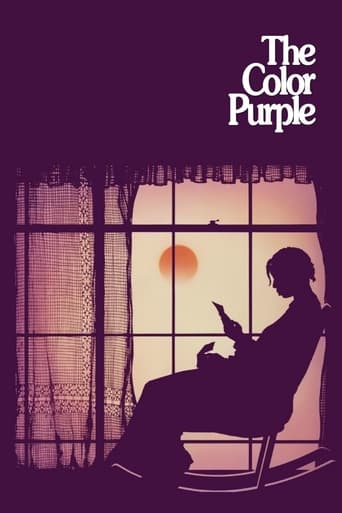
Reviews
Redundant and unnecessary.
It’s sentimental, ridiculously long and only occasionally funny
The movie turns out to be a little better than the average. Starting from a romantic formula often seen in the cinema, it ends in the most predictable (and somewhat bland) way.
The story, direction, characters, and writing/dialogue is akin to taking a tranquilizer shot to the neck, but everything else was so well done.
When John Cassavetes walked on to the art scene in the late 1950's, he did something revolutionary to the art of cinema. He spent his private money, casted his personal friends, chose locations without permission, and made what was unquestionably the first independent film. To every filmmaker that led after him, they have to give him many thanks. To make extraordinary pieces of cinema out of nothing at all is something that has changed the entire process of making movies. No longer were the big Hollywood sets, and the big Hollywood executive approval needed. All you needed to do was to pick up a camera and tell a story. For Cassavetes, those stories focused on the fascinating relationships that we have with each other as friends, neighbors or lovers. How social dynamics shift and clash on occasion. It was a small undertaking, but what came of it was a genius, introspect of the American social experience within his films. His first film was "Shadows", and it got a lot of people talking. It was a poorly filmed, poorly audio recorded and uneven piece for viewers even at that time. But, has it reached its cult appreciation today? Well, not exactly. Quite frankly, I was lost, and genuinely uninterested in movie.To start off with, we already understand that Cassavetes hired his close friends to act in his first feature. Huh, really? He needed better friends. The three siblings seemed to have a shaggy, inner-city charm to them, but it's watered down by their delivery. The fact that the movie centered on their close-nit relationship, and their protective nature against the white guy that their sister Leila dates, wasn't as believable as it should've been. These three should've had a strong chemistry. They should have had a connection that made everyone believe that they were a true family, looking out for one another. Honestly, they couldn't be more apart. To say nothing of the screenplay, which encourages the use of improvisation to create character, and doesn't do a particularly good job at it. A lot of the dialogue just ends up being a lot of rambling conversation. Somehow, the main idea of the plot gets lost in the mix. To make the film so unpredictable, when it centers on race relations prior to the Civil Rights Movement, the potential power of the piece gets tarnished when the actors just decide to do what they want to do, and loosely follow the actual narrative. For example, when the two brothers are coaching each other on how to warm up the crowd at the Jazz concert, it was completely disconnecting. It didn't contribute anything profound or interesting to the story; it just seemed like a way to let the two actors riff for a little bit. The positives of the picture, though, are many. I really liked the jazzy soundtrack, as the film roars it's opening titles in the midst of a swinging nightclub. It gave the film an attitude. It also puts you right into the spirit of the urban beatnik scene of Manhattan in the late 1950's. A new, happening scene is being shown to us very realistically. That is credit to John Cassavetes's use of cinema verite to establish the environment. He does it especially well when one of the brothers is walking out the nightclub and into a 50's Time Square. It's a New York scene at it's finest. We see hundreds of working class citizens walking the streets, unknowingly being filmed, as well as the camera swooping past old-style theatre marquees and dining establishments. This is unique, because the rest of the film relies so heavily on theatrics and performance. I'd definitely consider this the marriage between Cinema Verite and the Hollywood SAG feature. It combines a strongly focused performance, while capturing the micro-actions and nuances of real urban life in the 50's. It's a balancing act that to Cassavetes's credit has done much better, later on in his career. In the end "Shadows" remains to be a unique and interesting experiment by John Cassavetes, but not one that I think has much longevity for younger audiences. It's not as fresh as it was in the late 50's, and not nearly as well made. We happen to be all sticklers for the best visuals and audio qualities, but we also like stories that capture our attention, and make us feel, and I think that this movie did neither.
The film is grounded in a sort of vocabulary that was new at the time, in fact I think the influence of this is much more important than Breathless. You can tell now that it's scripted to be that way, that it's overdramatic in spots, and perhaps a bit long in the tooth. But for the time, it must have felt as intended, something wholly new and natural, a breath drawn for the first time. The main threads are not unusual, relationships, music, getting somewhere in life, but that's because in retrospect the casualness is familiar. It wasn't always there in American film. It would seem new when Woody Allen would do it a decade later. Heck, it would seem new when Tarantino would do it three decades later.The film points at the new morals, the life you wouldn't see in a Louis Mayer confection; a girl sleeps with a guy on the first date, whites and blacks hang together, fight and make-up, a girl dates a black guy, she is bossy and 'masculine', an exotic dancer turns out to be pregnant and happily married. Stereotypes are turned, for the first time that I know of so openly. That's fine.But what's really cool about it is that we don't just have life a certain way, but life wondering about what it means to be in the film.It's self-reference, but not Godard's schematic sort of exposing the camera and actors. Here it is completely merged with the flow of life. The talk between the jazz musicians about how to spice the 'act', how the audience loves jokes while joking about it to us. The girl who's written a story to be honest, purely felt, and her author friend who wants to sleep with her telling her about motivation. The beatnik guy who rants against 'teachers' who won't show life itself.There is no broader story. It's all by turns jazz riffing and making room that points at itself taking shape. There is some life, with dramatic ascends, with wonderful visual phrases. It's about all this having a presence, one as ubiquitous and mysteriously reflected on everything as the lights on the marquees and the strange man who pulls on the girl in that eerie, wonderful scene in the movie theater. This one scene right here, a few seconds, is the new language of cinema that is now saturating through Malick, more fully undertaken at the time in Hiroshima mon amour.And it's wholly 'now', what the beats knew as Zen at the time through Watts and others; the dharma wheel seen in the hot dog vendor's cart on the street.
Watching John Cassavetes debut film is a strange experience, even if you've seen improvisational films before.The first thing you notice is it's roughness. Right off, it's obvious some of the characters are screwing up their lines. But then you step back from the situation, as you sink deeper into these people's intimate exchanges and you ask yourself: "Do I ever stumble over MY words?" The answer of course, is sure, we all do. It's unfortunate that most of the gaffes in this respect come early in the picture, because, by about twenty minutes, you've sunk so deep in you wouldn't know it if a bomb went off behind you.The next thing you notice...or maybe you notice it hours or days after the film ends, is that you never saw any substantial plot, yet the themes and the poetry of the dialog and characters never leave you. In fact, the treatment of the role race plays in the everyday lives of these characters is always there, but it's so ephemeral that even they aren't aware of how it's informing their opinions of themselves, their self-consciousness, their perceived status, or the fate of their relationships.The title is appropriate because you get a full spectrum of blacks, whites, and grays...and not just in the skin pigmentation of the characters. Leila Goldoni (truly remarkable here) is an afro-American/Caucasian, her two brothers are white and dark afro-American. The irony is that they exist in what is undoubtedly the "hippest" most tolerant atmosphere of the time...beat-driven upper east-west Manhatten...and there are still conflicts within and around themselves.I don't think I've ever seen a movie with such a subtle delivery or technique. It's a lot like absorbing a really great piece of gallery art and then just nodding off in bliss as you think back to the images it evoked days later.Great mastering and extras on the Criterion disc. Arguably the first truly experimental independent film ever made.
Shot on a minimal budget of $40,000 with a skeleton six person crew, SHADOWS offers an observation of the tensions and lives of three siblings in an African-American family in which two of the three siblings, Ben (Ben Carruthers) and Lelia (Lelia Goldoni), are light-skinned and able to pass for white. Cassavetes demanded that the actors retain their real names to reflect the actual conflicts within the group but saw the film as being concerned with human problems as opposed imply to racial ones. Cassavetes shot the film in ten minute takes and jagged editing, a reaction against 'seamless' Hollywood production values. Cassavetes main inspiration - at least in the cinematic style the film was shot - were the Italian neo-realists whilst also professing admiration for Welles' pioneering spirit. The use of amateurs and improvisation might resemble some of the Italian neo-realist directors, but with his bebop score by Charles Mingus ans Shafi Hadi, the film feels very different, very American, unlike anything made before really. The song with the feathered girls, "I feel like a lolly-pop" (or something) feels like light years back to me, ancient history. But no matter how dated it might look, it still makes a delightful time capsule of late Fifties New York today. I think it's this is one of the first films made aspiring filmmakers realize they could shoot an independent film, without Hollywood, improvised and without a real budget. Seymour Cassel, who acted and was involved in SHADOWS, claims it was Jules Dassin's THE NAKED CITY (1948) that was the first and inspired them all, but I think this was the one that really opened the eyes of aspiring independent American filmmakers.Camera Obscura --- 8/10
